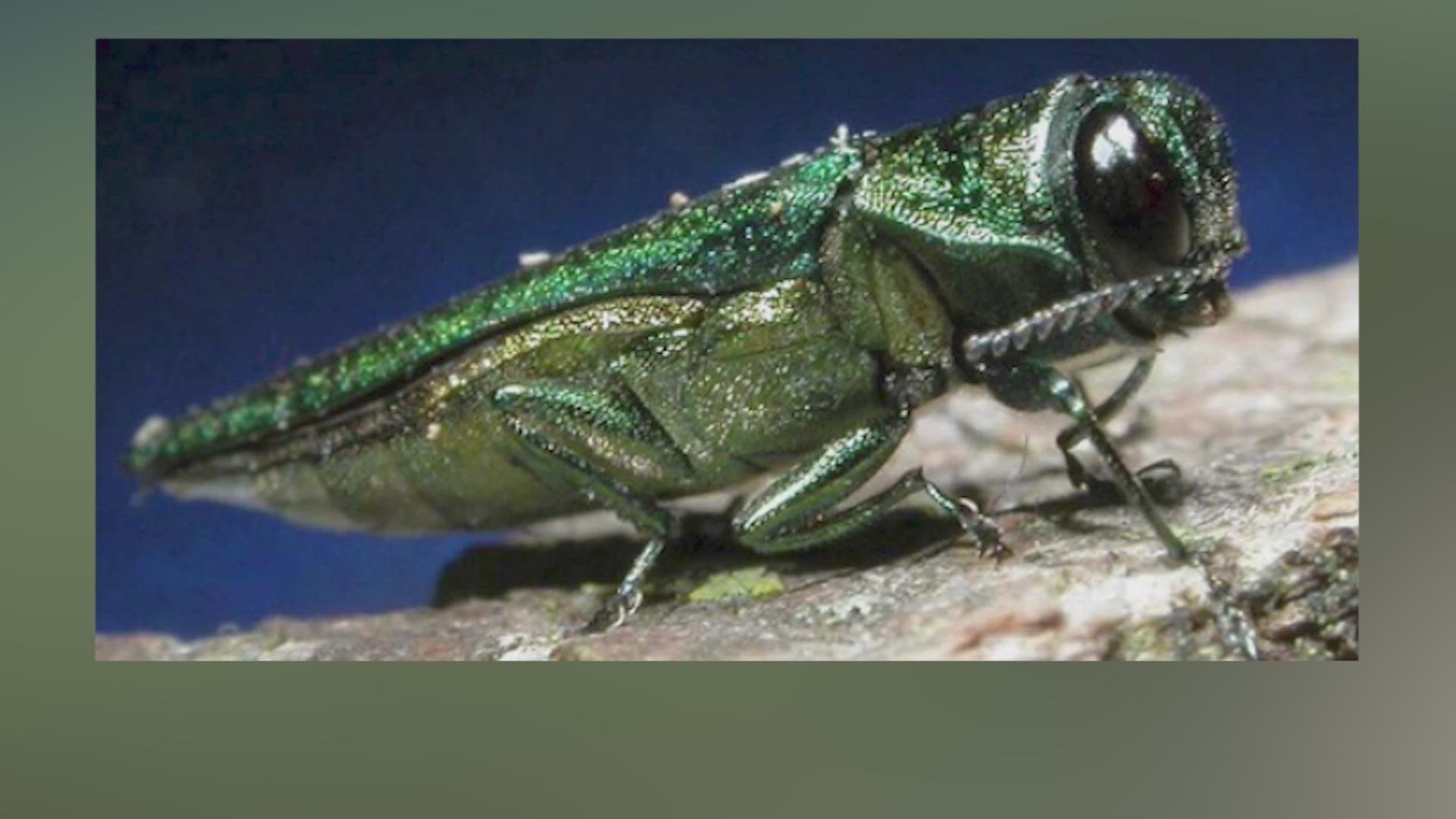DALLAS — A small insect that has the potential to destroy certain types of trees has appeared in the City of Dallas.
The presence of the emerald ash borer has been confirmed in the city limits, according to the Dallas Park and Recreation Department.
The small, metallic green beetle digs its way into ash trees.
“The potential for Dallas. It is a serious matter,” said Brett Johnson, senior environmental coordinator and urban biologist with the City of Dallas Park and Recreation Department.
A team of city staffers has been doing inventory of ash trees in and around Dallas over the past 18 months. They’re tracking the beetle’s invasion and damage.
“After [the emerald ash borer] was found in Tarrant County in 2018, we knew it was basically a matter of time until it got to Dallas County and the City of Dallas," said Johnson.
Once the beetle gets into an area and affects an ash tree, that tree could be dead within two to three years, if not treated.
Urban biologists and city foresters say the insect tunnels its way through ash trees during its larval stage. That blocks nutrient flow to the tree. If an ash tree cannot eat, nor drink, it will die.
There are several ways to identify an ash tree, according to Chris McMaster, a Forester with the City of Dallas.
“The first thing you’re going to be able to notice is it’s got a compound leaf,” said McMaster.
The compound leaf of an ash tree is made up of five to nine leaflets. The tree can also be identified by its unique branching, which spreads on opposite sides of a stem.
The ash tree also produces single-wing seeds. It also has a distinct bark pattern.
“It has this cross-hatching, or what we call diamond plating,” said McMaster.
Dallas Park and Recreation staffers say you may also identify an ash tree from the blonde patterns on its bark, which comes from birds, squirrels and other critters.
Johnson and McMaster said if you have ash tree around your home, it’s best to call a professional arborist to help determine if the emerald ash borer has already visited and how best to treat the tree.
For more information about the emerald ash borer, click here.

